Airports and train stations are looking to LED technology in 2021 and beyond
Many are planning technology overhauls to carry them into the next decade
By Filip Cogghe, Director of Transportation, EMEA, – Aviation & Public Transport, Sharp NEC Display Solutions

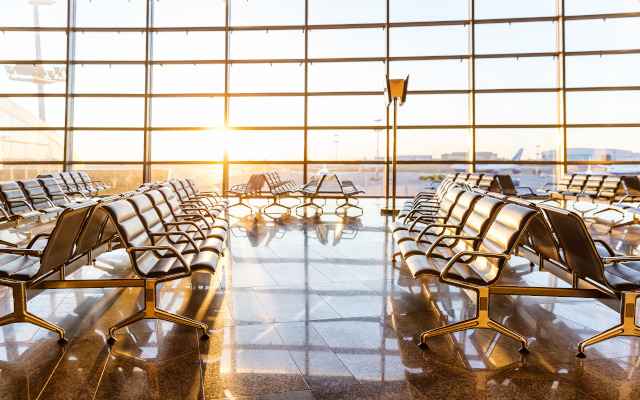
In 2019, the transportation and aviation sector was already beginning its next technical revolution – or, at least, a technical renovation. In 2020, the sudden loss of traffic left the entire sector scrambling.
Whether a large airport or a small local carrier, every industry player was deeply affected by the unprecedented drop. Some airport and train station management teams, however, marshalled their resources to use this temporary drop effectively.
There are varied opinions on when travel will bounce back. Some hope that vaccination rollouts will produce a swift uptick. Others think it may be up to five years before both business and vacation travel return to their 2019 levels.
According to IATA forecasts, air transportation will see a recovery in 2021 and 2022, with the Asia Pacific and Middle East regions expected to recover more quickly than the more mature air transport markets in North America and Europe.
Whatever the rate of recovery turns out to be, no one doubts that traffic will return to levels that had airports and train stations bursting at the seams.

Sharp/NEC’s displays in waiting area of Heathrow Airport

Sharp/NEC’s LED installation at Swedavia Arlanda Stockholm airport
Airport and train station leaders are taking advantage of this time of reduced traffic to implement renovations. These are usually costly and difficult to perform, as they are limited in the extent to which they can close any part of their footprint. Some airports, like Avinor Oslo, expanded their physical footprint by building during 2020’s reduced traffic. Others, like Swedavia Arlanda Stockholm airport, are expanding their technological framework.
Display technology is moving quickly to fill in the gaps in the existing infrastructure. High-resolution displays have become cost-effective enough to be deployed throughout a large footprint. Content management has become simple and intuitive. AI can even manage which travellers see what information. On the manufacturing side, these displays are being developed with product life and safety in mind.
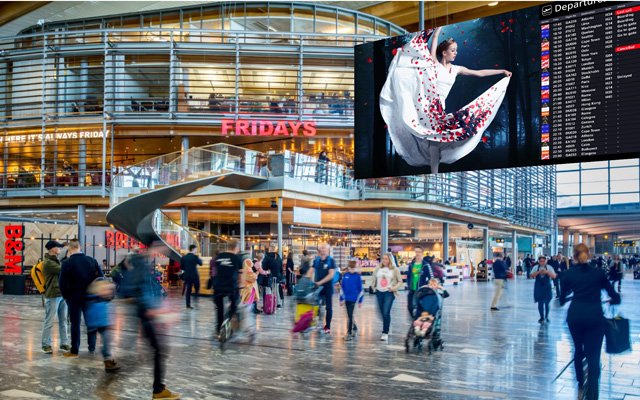
FIDS and PIDS
Flight Information Display Systems (FIDS) in airports and Passenger Information Display Systems (PIDS) in train stations allow travellers to see what is departing when and from where. For decades, that was all they did because it was enough of a technological challenge to keep them up-to-the-minute. Now, content management systems (CMSs) run many displays easily and smoothly.
The signs themselves were originally flipboards, which became the familiar DOS-looking monitors then, in their previous jump, narrow LCD displays. The PIDS and FIDS innovations being implemented now are high-resolution LED screens.
They are easy to see from across a busy room and, more usefully for management, can host simultaneous content. That means management can be informing travellers from the first step of their journey. For example, the FIDS can also show information about hygiene rules or high-resolution videos of a delicious airport restaurant.
Wayfinding
Wayfinding is another important step in the customer journey that’s being revolutionised by display technology. For years, transportation hubs relied on static signage in the local language and maybe one or two others. This required a lot of worker hours to help answer questions from travellers struggling with language or to post signage in case of a necessary change. LED wayfinding solutions eliminate these issues through responsive CMSs and AI.
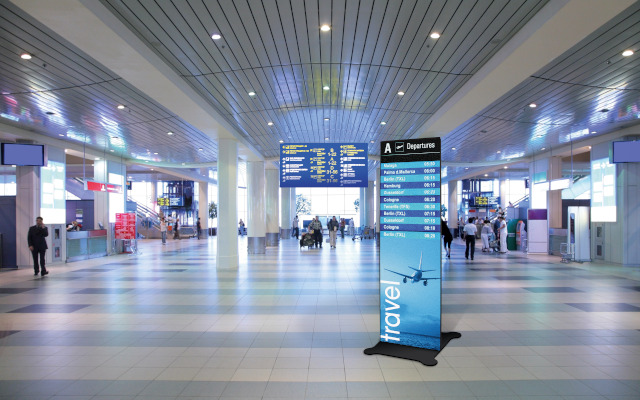
These solutions allow displays to be constantly updated according to need. They can display security wait times throughout the area.
They can toggle between many languages, offering information to many more travellers. Many of us have already become accustomed to a lower-stakes version of this at the baggage claim, where LED displays routinely offer up-to-the-minute information about the arrival destination.
Some airports have already rolled out an AI-enabled CMS that connects display language to gate information. For example, the FIDS and signs around a gate might normally be in German and English. When a flight from Russia arrives at the gate, the CMS would add information in Russian as well.
Video walls and installations
There is one area in which LED is carving a niche all on its own: installations. Recently, transportation hubs have begun using LED solutions to delight and impress, giving travellers a momentary relief from the work of getting from point a to point b.
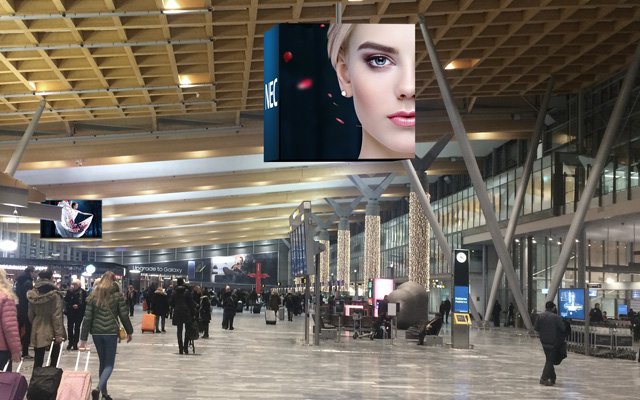
In the process, they give themselves an indelible image. LED is uniquely suited to these installations because of its flexibility and vivid colours. Flexible LED and Curved LED can add dimension to terminals, creating a sense of depth or futuristic playfulness. Transparent LED can display brilliant imagery while keeping a sense of light and space.
Video walls, on the other hand, can turn the airport into a digital canvas. Corridors, sitting rooms and terminals can be transformed by engaging content. It’s also an incredibly effective way to inform passengers about nearby amenities or encourage them to shop.
Sharp/NEC recently worked with Oslo Gardermoen Airport on a series of installations that transform the space and encourage passengers to visit restaurants.
Factors to consider
As transportation management considers these LED upgrades, they are looking long-term. The current decrease in traffic will be replaced by teaming crowds once again. Any solution that’s implemented needs to work for a long time without lots of fussy maintenance. Sharp/NEC’s current solutions generally offer at least 100,000 hours of use. That’s about ten peaceful years, with spare parts and support. In a market flooded with cheap, short-lived solutions, it’s important that the planning process looks at total cost of ownership, not just cost.
Read our whitepaper on DirectView LED: “How all LEDs are not the same”

Safety and sustainability are additional key considerations. Many displays use plastic frames that cannot be recycled at all or cannot be recycled without significant environmental cost.
Worse, they form a hazard in case of a fire, as the frame would melt and release toxic chemicals. Sharp/NEC uses metal frames that are heat resistant, making them safer for use and more able to pass safety regulation tests.
More information on plastic or metal chassis:
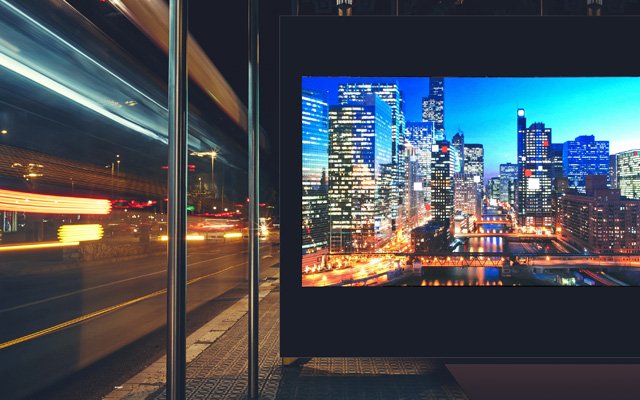
LED solutions are being deployed in airports and train stations around the world to better inform passengers and create a unique transportation experience. Working with LED experts allows each institution to find a solution that fits their space perfectly.
Many are doing so now, when they have space to do a renovation or build, to set themselves on course for the return of travel. With LED signage, wayfinding and installations, they’re future-proofing their hubs and ensuring smooth operation for years.
More information on Sharp/NEC’s airport solutions:
